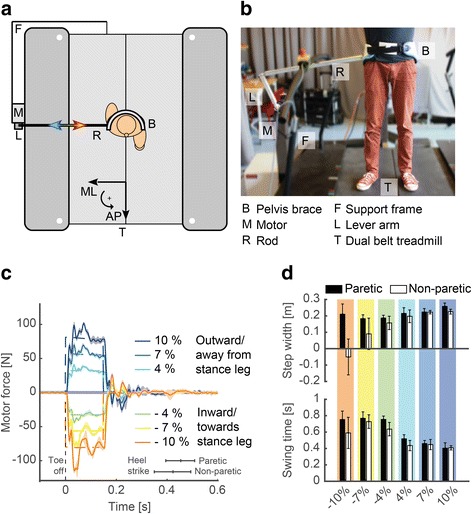Fig. 2.

To systematically assess how patients maintain their balance when being perturbed during walking, the University of Twente has developed a pelvic perturbation device (a and b) [36]. This device consists of an admittance-controlled motor (Moog, Nieuw Vennep, the Netherlands) connected via a lever arm and a rod to a pelvic brace worn by the subject. The device allows providing perturbations in different directions, with different magnitudes and different durations at precisely timed instances of the gait cycle while walking on a treadmill (c, mediolateral perturbations timed at toe off with magnitudes expressed as % of body weight). In collaboration with Roessingh Research & Development, the device was used to assess the foot placement strategies of ambulatory stroke survivors when being perturbed away or towards the stance leg at the start of swing of the paretic or non-paretic legs. Responses of the step directly following the perturbation in a single stroke survivor are indicated in (d). Whereas the stroke survivor made a cross step, as evidenced by the negative step width, with his non-paretic leg when being forcefully perturbed towards the paretic leg, he did not make a cross step with his paretic leg. When being perturbed away from the stance leg, both the paretic and non-paretic side only slightly adjusted the step width but the foot was placed faster on the ground, as evidenced by the decreased swing time, to counteract the perturbation
